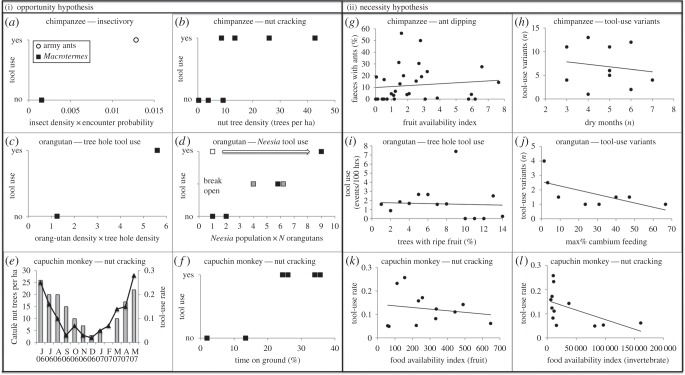Figure 1.
(i) Support for the opportunity hypothesis: (a) insectivory tool use by chimpanzees and opportunity for innovation (insect encounter likelihood) at Seringbara; (b) tool use in nut cracking and opportunity (nut tree densities) across chimpanzee sites; (c) tree hole tool use and opportunity (orangutan density × tree hole density) at two orangutan sites (Ketambe, Suaq); (d) Neesia tool use and opportunity (Neesia population size × N orangutans in Neesia population) across sites (black, Sumatran sites; grey, Bornean sites; white, Batang Toru, Sumatra); (e) tool-use rate to crack nuts by capuchin monkeys and opportunity (catulè nut availability) at Boa Vista (modified from reference [14]); (f) tool use in nut cracking and opportunity (% time on ground) across capuchin monkey sites. (ii) Lack of support for the necessity hypothesis: (g) tool use in ant dipping (% faeces with ants) in relation to fruit availability index by chimpanzees at Seringbara; (h) subsistence tool-use variants and number of dry months across chimpanzee sites; (i) tree-hole tool use in relation to % trees with ripe fruit by orangutans at Suaq; (j) subsistence tool-use variants and maximum % cambium feeding across orangutan sites; (k) tool-use rate to crack nuts in relation to food availability index (fruit, kg per ha) by capuchin monkeys at Boa Vista; (l) tool-use rate to crack nuts in relation to food availability index (invertebrate, kg per ha) by capuchin monkeys at Boa Vista.

